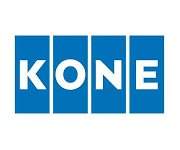What is a pre start check?
A pre start check, also known as a pre start inspection or pre-operation check, refers to a routine assessment conducted on equipment, machinery, vehicles, or tools before they are put into operation. A pre start check ensures that the equipment is in proper working condition, free from defects, and safe to use. This preventive measure is vital in various industries to mitigate risks, prevent accidents, and maintain the overall efficiency of operations.
Pre start checks are prevalent in heavy sectors such as construction, oil and gas, mining, and manufacturing. However, they are also a routine practice in everyday life, where individuals instinctively conduct basic assessments before engaging in various activities and tasks.
Critical components of a pre start check typically include
- Visual Inspection: Operators visually examine the equipment for any visible signs of damage, wear, or anomalies. This might involve looking for leaks, loose parts, or signs of corrosion.
- Fluid Levels: Checking fluid levels such as oil, coolant, hydraulic fluid, and fuel to ensure they are at appropriate levels for safe operation.
- Tire or Track Inspection: Inspecting tires or tracks (depending on the equipment type) for proper inflation, wear, and alignment to ensure stability and safe movement.
- Functional Checks: Testing various components and functions, such as lights, signals, brakes, steering mechanisms, and safety features, to ensure they are operational.
- Controls Verification: Ensuring that controls, levers, switches, and buttons are functioning correctly and responding as expected.
- Emergency Equipment: Checking the presence and functionality of emergency equipment, such as fire extinguishers, alarms, and emergency shut-off mechanisms.
- Safety Features: Verifying the proper functioning of safety features like seat belts, guards, and interlocks that prevent accidental operation.
- Documentation: Recording the results of the pre start check, often in the form of a checklist or log, to provide a record of the inspection's completion and findings.
Pre start checks are not only about ensuring the equipment's mechanical integrity but also about addressing safety concerns. They help identify potential issues that could lead to accidents, breakdowns, or operational disruptions. Regular pre start checks foster a culture of safety, accountability, and responsible operation within an organisation.
These checks are especially crucial in industries where equipment failure or malfunctions, such as construction, manufacturing, mining, transportation, and agriculture, could have severe consequences. By conducting pre start checks, operators and maintenance personnel create a safer work environment, reduce downtime, and maintain equipment longevity.
The concept behind a pre start is rooted in proactivity – the most effective approach to prevent issues is to conduct thorough inspections of equipment or scenarios before their commencement. By dedicating time to assessing these factors beforehand, one can identify and address potential concerns. Carrying out fundamental checks on recognised hazards and troublesome zones can significantly diminish both the risk and the potential outcomes that could arise.
The example below provides a clear illustration of the thoroughness expected in a quality pre start procedure, along with a well-structured format that simplifies both its execution and subsequent analysis.














